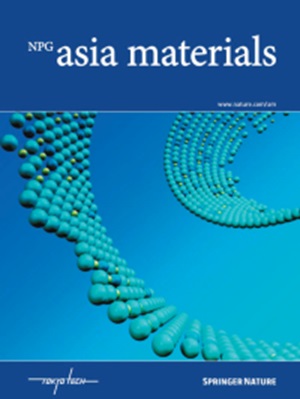通过自组装涂层将外源支架与人体冠状动脉连接:设计、功能和应用
IF 8.3
2区 材料科学
Q1 MATERIALS SCIENCE, MULTIDISCIPLINARY
引用次数: 0
摘要
药物洗脱支架是治疗冠状动脉疾病的常用方法。然而,药物洗脱支架所用的涂层存在一些局限性,如生物相容性和药物负载能力较差。近年来,自组装方法已成为支架涂层的一种有前途的替代方法。与传统涂层相比,自组装涂层采用生物材料,具有厚度更薄、结合能力更强、生物相容性更好等优点。本综述讨论了药物洗脱支架自组装生物材料涂层的最新研究。我们探讨了如何利用逐层涂层和复合涂层膜来装载和释放药物,使其具有较高的药物装载能力和生物相容性,以及如何促进内皮粘附和生长。此外,我们还研究了自组装涂层如何用于释放抗凝活性分子和提供基因治疗。此外,我们还讨论了自组装涂层在未来发展中的潜力,包括智能靶向给药、仿生支架涂层和 3D 打印支架涂层。这些进步有可能进一步提高药物洗脱支架治疗冠心病的效果。本文章由计算机程序翻译,如有差异,请以英文原文为准。


Interfacing exogenous stents with human coronary artery by self-assembled coating: designs, functionalities and applications
Drug-eluting stents are a commonly used treatment for coronary artery disease. However, the coatings used in drug-eluting stents have some limitations such as poor biocompatibility and drug loading capacity. In recent years, self-assembly methods have emerged as a promising alternative for stent coatings. Self-assembled coatings employ biomaterials and offer several advantages over traditional coatings, including thinner thickness, stronger binding capacity, and better biocompatibility. This review discusses the latest research on self-assembled biomaterial-based coatings for drug-eluting stents. We explore how layer-by-layer coatings and composite coating films have been utilized to load and release drugs with high drug loading capacity and biocompatibility, as well as how they promote endothelial adhesion and growth. Additionally, we examine how self-assembled coatings have been used to release active molecules for anti-coagulation and deliver gene therapy. Moreover, we discuss the potential of self-assembled coatings for future development, including intelligent targeted drug delivery, bionic stent coatings, and 3D printed stent coatings. These advancements have the potential to further improve the effectiveness of drug-eluting stents in treating coronary artery disease. The next-generation coronary artery stent by self-assembled coating: Self-assembled coatings in drug-eluting stents can bind biomaterials and offer several advantages over traditional coatings, including thinner structures, stronger binding capacity, and better biocompatibility. The encouraging achievements of self-assembled stent coatings include corrosion resistance, anti-fouling, anti-thrombogenicity, endothelialization, and targeted gene therapy. Future investigation and development of self-assembly in stent coatings will help improve the functionalities of self-assembled coatings in coronary artery stents and greatly extend their applications.
求助全文
通过发布文献求助,成功后即可免费获取论文全文。
去求助
来源期刊

Npg Asia Materials
MATERIALS SCIENCE, MULTIDISCIPLINARY-
CiteScore
15.40
自引率
1.00%
发文量
87
审稿时长
2 months
期刊介绍:
NPG Asia Materials is an open access, international journal that publishes peer-reviewed review and primary research articles in the field of materials sciences. The journal has a global outlook and reach, with a base in the Asia-Pacific region to reflect the significant and growing output of materials research from this area. The target audience for NPG Asia Materials is scientists and researchers involved in materials research, covering a wide range of disciplines including physical and chemical sciences, biotechnology, and nanotechnology. The journal particularly welcomes high-quality articles from rapidly advancing areas that bridge the gap between materials science and engineering, as well as the classical disciplines of physics, chemistry, and biology. NPG Asia Materials is abstracted/indexed in Journal Citation Reports/Science Edition Web of Knowledge, Google Scholar, Chemical Abstract Services, Scopus, Ulrichsweb (ProQuest), and Scirus.
 求助内容:
求助内容: 应助结果提醒方式:
应助结果提醒方式:


